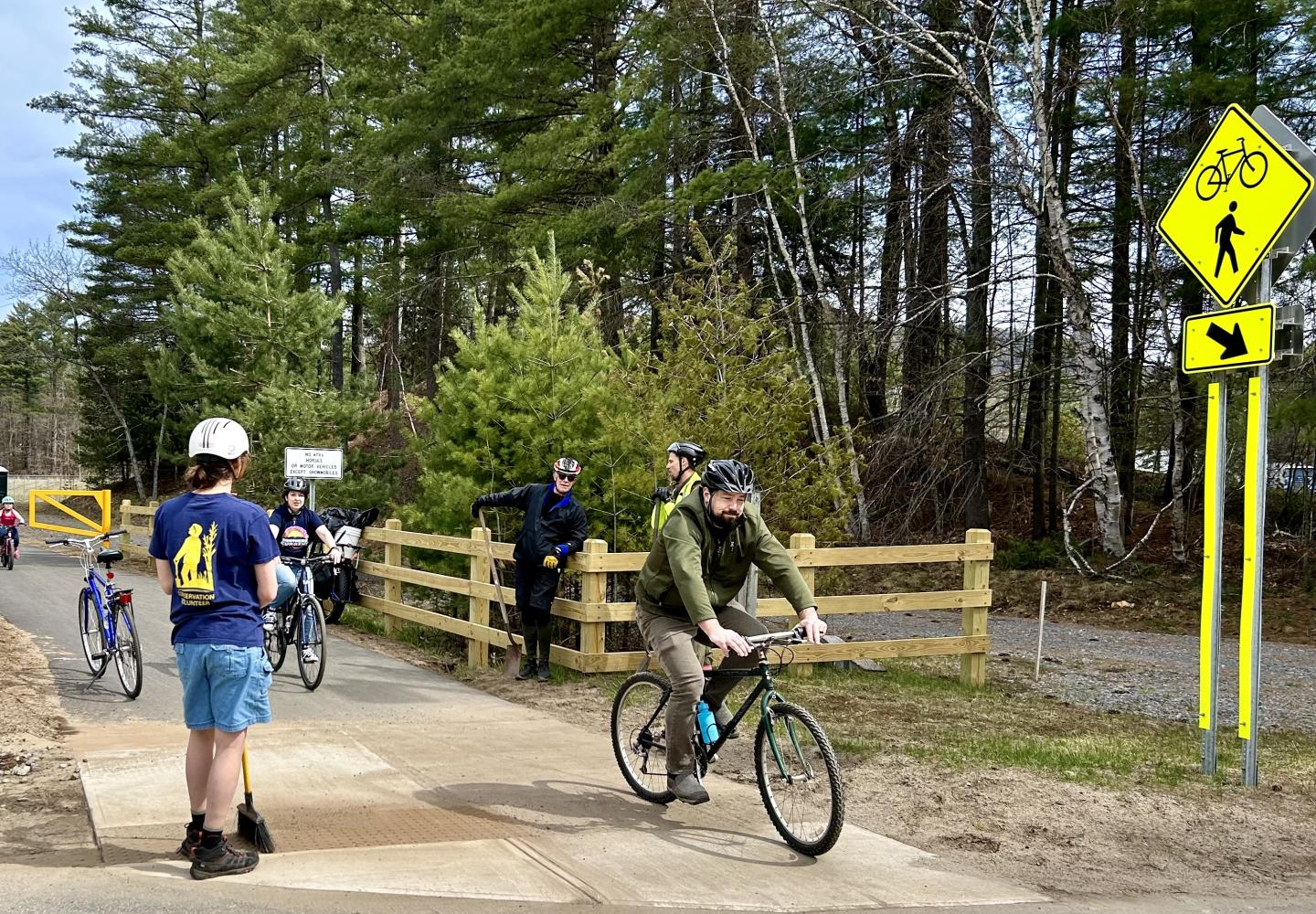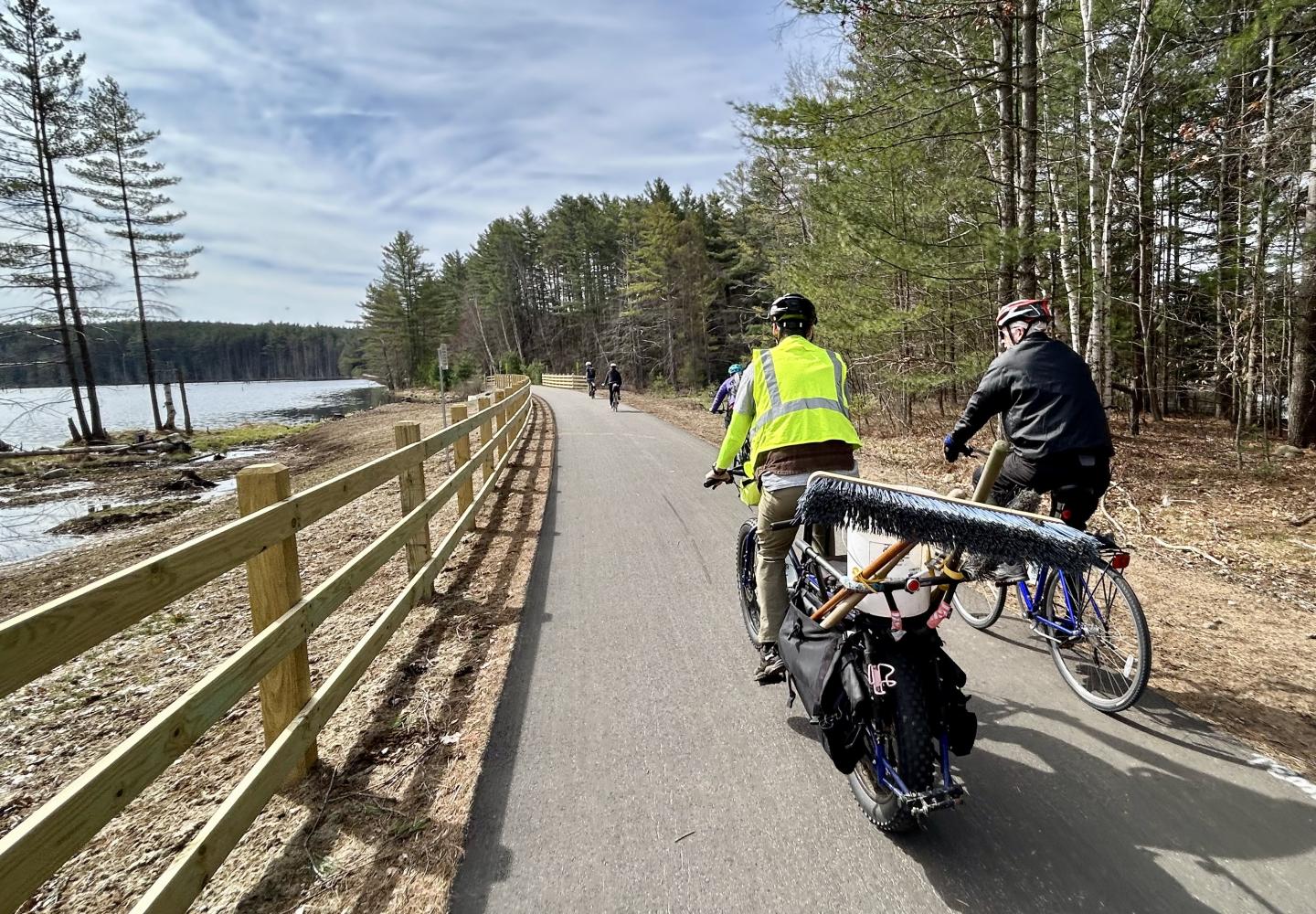Adirondack Rail Trail Construction Update
Spring construction season is here, which means improvements to the 15-mile Phase 2 section of the Adirondack Rail Trail between Saranac Lake and Floodwood Road is underway.
With the arrival of spring the warblers have returned and cyclists are flocking to the Adirondack Rail Trail. In fact, cyclists were enjoying the trail even before all the snow had melted. Biking the trail on a warm day in mid-April, I saw many fellow cyclists as well as walkers and other users.
The excitement is understandable: although the 10-mile stretch from Lake Placid to Saranac Lake opened in December, we are now entering the prime biking season--the first in which we can ride on a finished section of the trail.
Eventually, the rail trail will extend 34 miles, from the former depot in Lake Placid to Tupper Lake. Work on the 15-mile section from Saranac Lake to Floodwood Road began last year and is expected to be completed this fall. Meantime, that stretch is closed to the public.
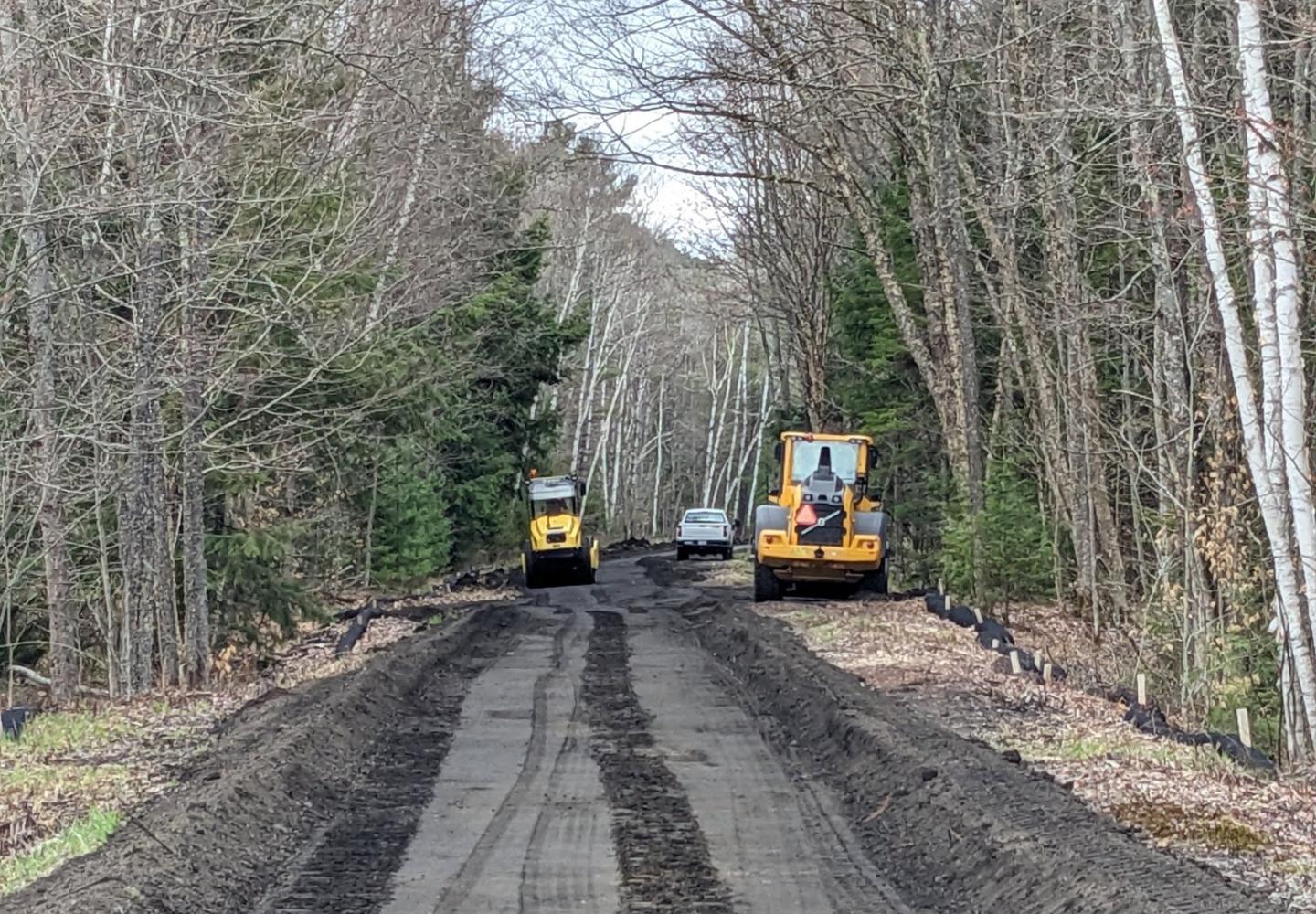
The Department of Environmental Conservation (DEC), which manages the trail, intends to solicit bids soon for Phase 3, the nine-mile section from Floodwood to Tupper Lake. Work is expected to begin this year and conclude in the fall of next year. This section also will be closed during construction.
Most of the rail trail will be surfaced with packed stone dust, but the two miles within the village of Saranac Lake have been paved. On the paved trail, it’s common to see people strolling, rollerblading, skateboarding or pushing baby carriages.
I was curious to see how the stone dust held up after the winter. I rode my gravel bike on the finished trail one day and my road bike another day. Though I saw shallow grooves caused by snowmobile skis and bike tires, they posed no difficulty. If the trail becomes rutted in the future, DEC says it will make repairs as necessary.
The painted crosswalks where the trail traverses roads did not fare as well. Some crosswalks have faded to virtual invisibility. DEC is aware of the problem and plans to address it, along with a few minor dips in the Phase 1 section where culverts and other pipes beneath the trail have sunk.
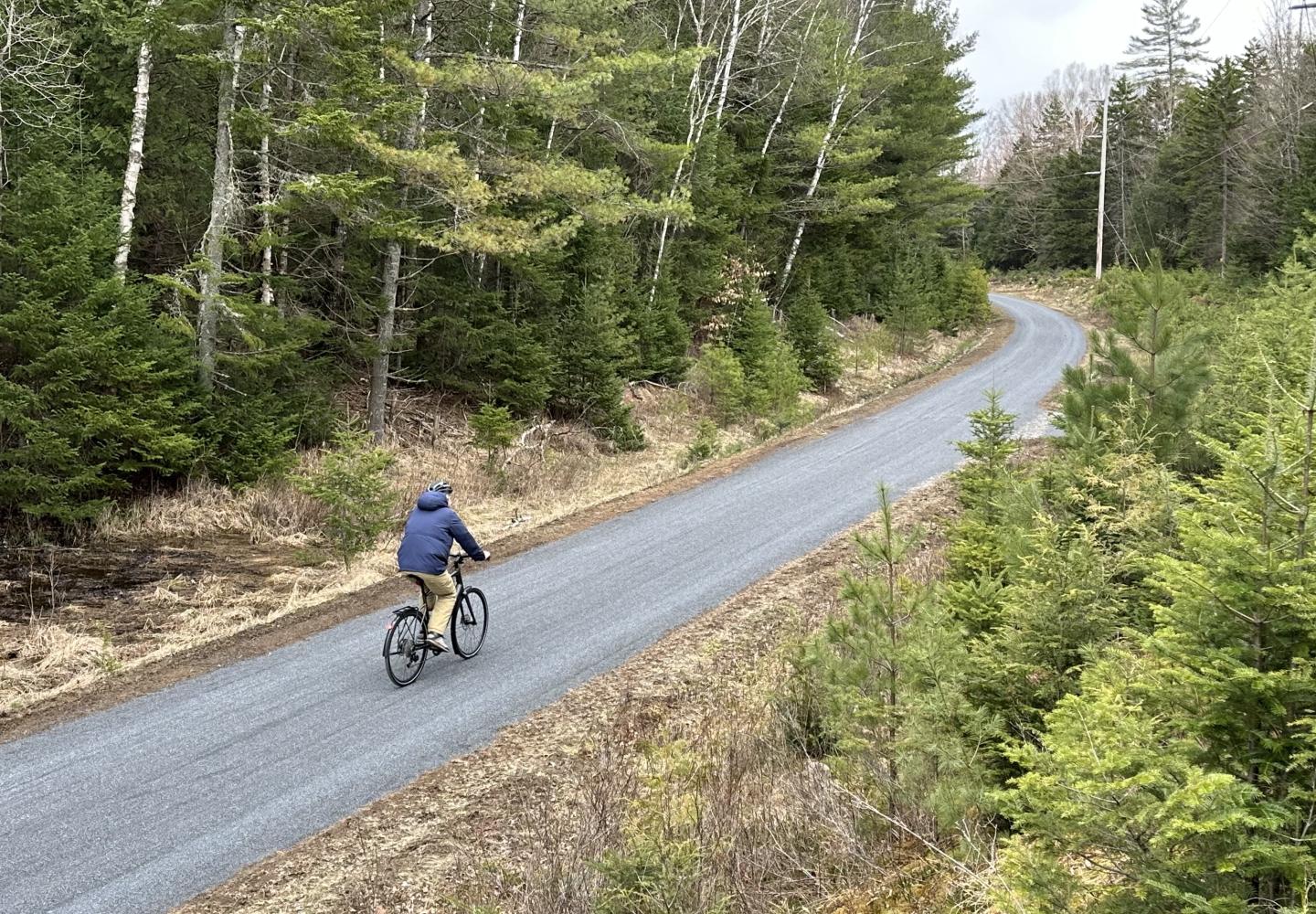
In April, local residents engaged in a heated debate on Facebook about whether vehicles or trail users have the right of way at crossings. According to DEC, trail users should stop when reaching a road (there are stop signs on the trail), but motorists must yield the right of way to pedestrians in the crosswalk, including cyclists walking their bikes. However, cyclists mounted on their bikes must yield to vehicles. Following is an explanation of the law sent by DEC to Bike Adirondacks:
“All users of the Adirondack Rail Trail must observe posted stop signs and should not enter a roadway without stopping first. Per Vehicle and Traffic Law (VTL) Section 1151, drivers should yield to pedestrians and cyclists who have dismounted to cross on foot at a marked crosswalk on the Rail Trail. Per Parks, Recreation and Historic Preservation Law Section 25.05(3) and VTL Section 1234(c), snowmobilers and mounted cyclists are required to yield to vehicles when crossing a public road."
Whatever the legalities, cyclists should exercise common sense in deciding when to cross. Keep in mind that some motorists may not know or heed the law.
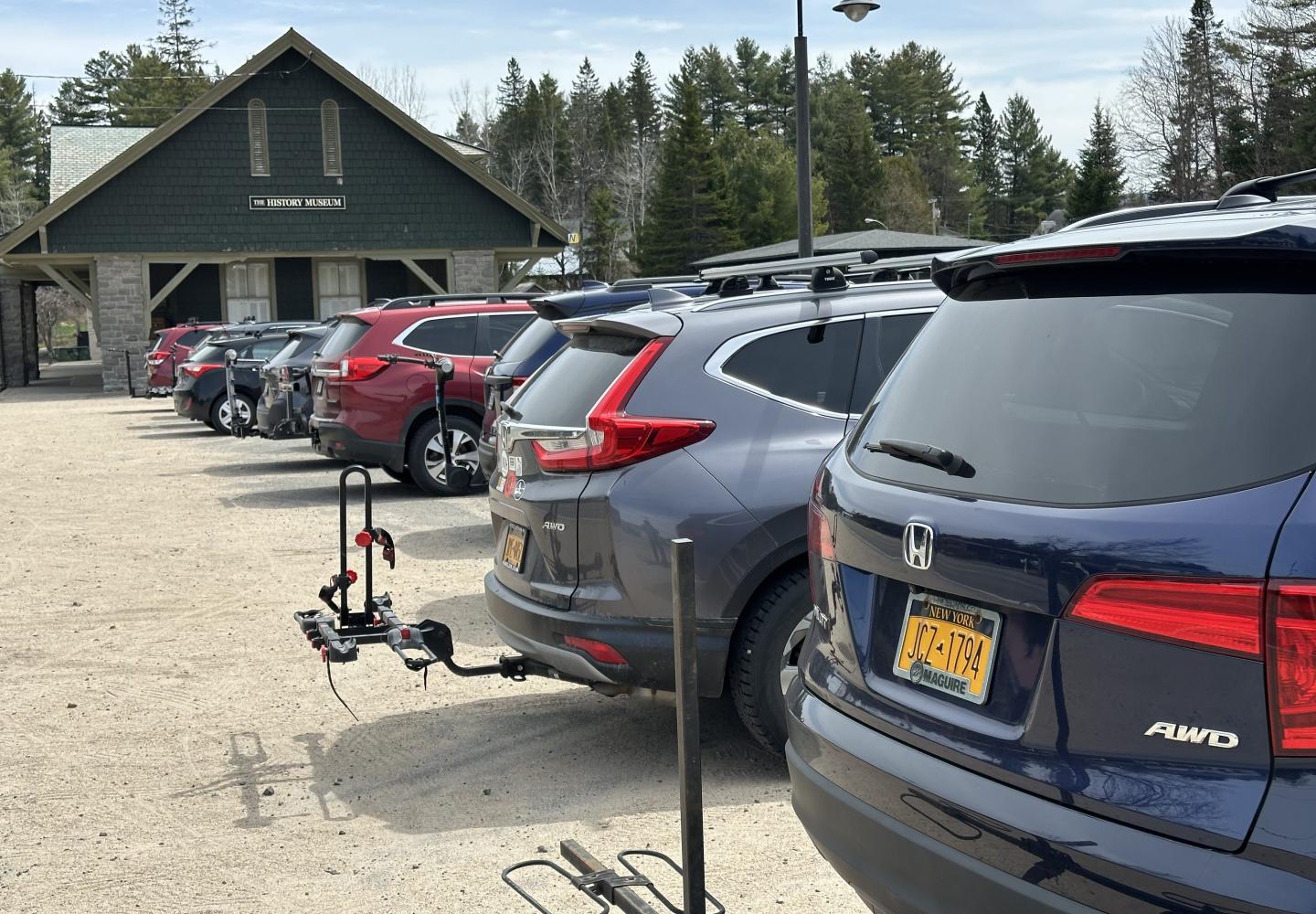
In Lake Placid, the rail trail now starts (or ends, depending on your direction) at the Station Street crossing a few hundred yards west of the old depot, which houses a museum. The Open Space Institute plans to build a 43-car parking lot at the depot and close the gap in the trail. OSI expects to buy 1.8 acres near the depot, which it intends to transfer to the village of Lake Placid. The nonprofit organization has secured a $500,000 state grant for the project and hopes to raise an additional $330,000. The lot is expected to be finished by the fall.
Plans are also afoot for the former depot in Saranac Lake. DEC began repairing the roof this spring and will be soliciting formal proposals for managing the building. The nonprofit Adirondack Rail Trail Association (ARTA) expects to submit a proposal that includes, among other amenities, bike rentals and repairs, bike racks, merchandise, food services, vending machines and picnic tables.
“Since there are four depots along the corridor, we envision creating a master plan that could apply to any additional depot conversions. This will be a multi-stage process. First stage is an architectural review of the conditions and needs to accommodate those concessionary services,” said Lee Keet, one of the founders of ARTA.
Besides the depots in Saranac Lake and Lake Placid, there are those in Lake Clear and Tupper Lake. There is a smaller station in Ray Brook, but DEC has no plans to fix it up.
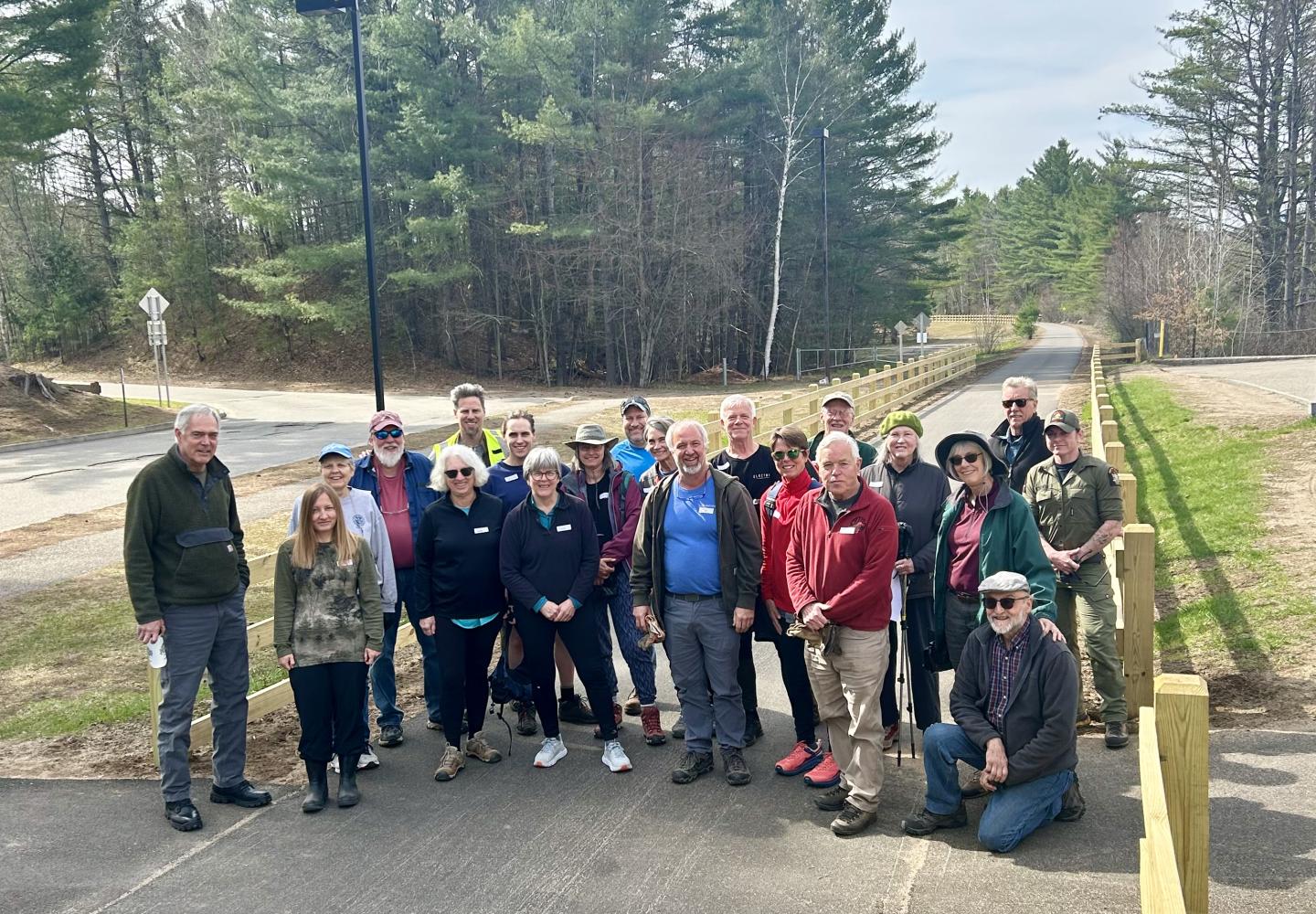
ARTA received a North Elba Local Enhancement and Advancement (LEAF) grant to install to eight portable privies along Phase 1 at locations chosen by DEC, including Fowler’s Crossing, where the state has built large parking lots on the outskirts of Saranac Lake. The privies were installed in late April. Soon enough, people began putting plastic bags with dog waste in the latrines. Kathleen Martens, an ARTA consultant, said the organization will discuss how to address the problem. “No trash or plastic should go into the porta-potties,” she said.
Trail boosters hope that bathrooms will be built at the Lake Placid and Fowler’s Crossing trailheads. If it can raise enough money, OSI plans to build bathrooms near the Lake Placid depot.
ARTA also is collaborating with the Regional Office of Sustainable Tourism to create signs with the rail-trail logo at trailheads and in other locations directing people to trailheads. Martens said the signs may be in place by late spring or early summer. Once the entire trail has been constructed, DEC plans to install signs along the trail focusing on natural history and cultural history.
ARTA has 31 volunteers, many of whom are trail stewards who will alert DEC to problems. The organization is looking for an executive director to replace Brian Woods, who left last year.
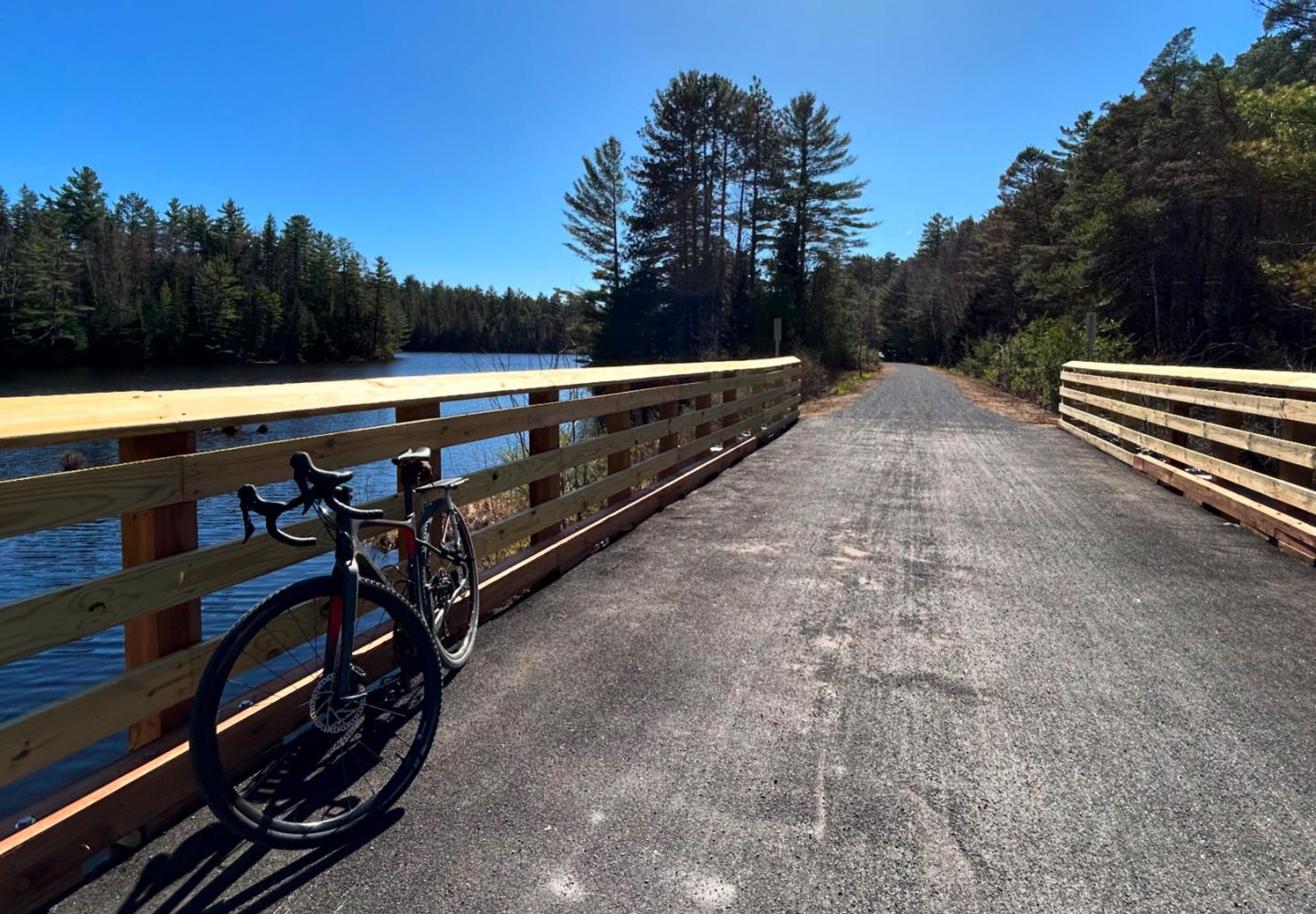
Despite its proximity to communities, the Phase 1 section of the rail trail affords plenty of natural scenery. It includes a 6.7-mile stretch with no crossings of public roads. It passes wetlands, streams and forests. Peaks visible from the trail include McKenzie Mountain, Baker Mountain, Scarface Mountain, Seymour Mountain and the Sentinel Range.
Phase 2 is wilder and more remote. What it lacks in mountain scenes it makes up for with views of lakes and ponds: Lake Colby, McCauley Pond, Lake Clear, Rat Pond, Little Rainbow Pond, Hoel Pond, Turtle Pond and, at its terminus, Floodwood Pond. For much of the way it borders the St. Regis Canoe Area.
Cyclists can see all this for themselves when Phase 2 opens in the fall. It will then be possible to bike 25 miles from Lake Placid to Floodwood. Strong cyclists may want to do the 50-mile round trip in a day. Others may opt for a two-day adventure, camping out near the trail or staying at an inn or hotel. For a bite to eat, visitors can choose from a number of restaurants and stores in Lake Placid, Ray Brook, and Saranac Lake. Another convenient option is Charlie’s Inn, a restaurant, lodge, and campground adjacent to the trail in Lake Clear. Phase 2 ends at the Floodwood Outpost, which sells snacks, drinks and outdoor supplies.
